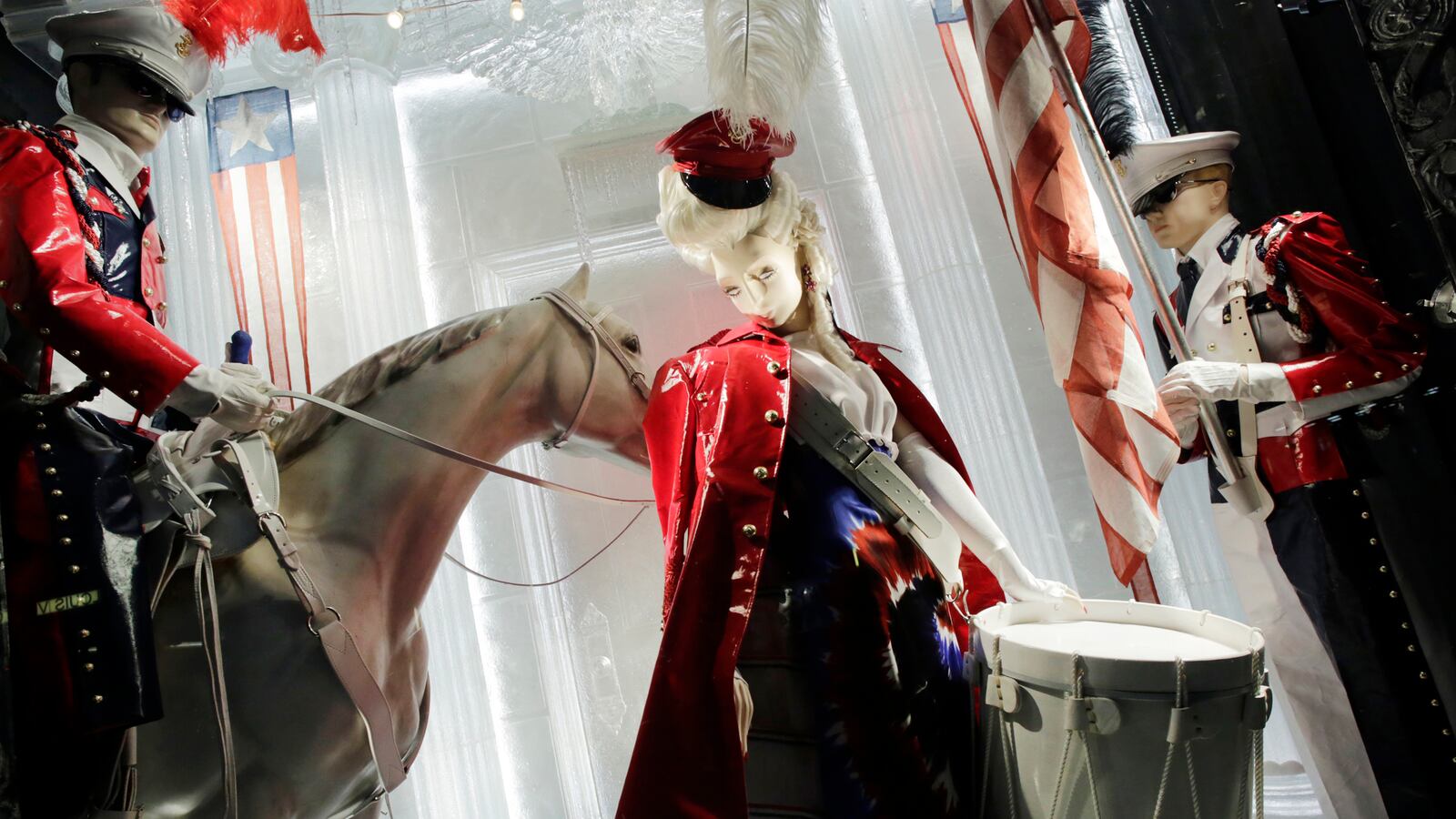
In 1897, L. Frank Baum, author of The Wonderful Wizard of Oz, was the first to acknowledge window dressing as a fashion and art entity in and of itself. Baum created the monthly trade journal The Show Window: A Journal of Practical Window Trimming for the Merchant and the Professional, founded the National Association of Window Dressers, and published the first book dedicated to the subject in 1900, The Art of Decorating Dry Goods Windows and Interiors.
While Baum may have helped start the magic, it’s David Hoey, Bergdorf Goodman’s resident window dresser, who brings the holiday spectacle to life today.
Texas-native, Hoey, who started at the Fifth Avenue department store in the summer of 1996, laughs that no one deliberately wants to be a window dresser. “I have yet to meet anyone who set out that way. Have you ever heard of a degree in window display?” he asks. “It doesn’t exist, because everyone comes at it sideways.”
Sideways or not, Hoey’s seventeen-year career at Bergdorf’s is part-production, part-fantasy; part-art, part-fashion. “It’s not an examined commercial art,” Hoey explains, despite the fact that window dressing has existed since the early 20th century. “The 1930’s were interesting because there was a lot of surrealism. In the forties, windows tended to be very patriotic [with] World War II. The 1950’s windows were very soigné.”

It wasn’t until the mid-seventies, however, that window dressers in New York broadened their horizons and abilities, creating bold and shocking window displays. And it was in the same decade that the idea of window dressing as a career first intrigued Hoey.
At 12-years-old, in Hoey’s hometown of Dallas, a nearby shopping mall presented a shocking window display, causing a frenzy in the media. Inside the window, one mannequin was dressed, looking very pleased with herself, he describes, and two other mannequins were lying on the floor, tied up with rope. “Somehow I understood reading the newspaper report that the window dresser had been inspired by what was going on in New York.”
In New York, “you had people like Candy Pratts Price at Bloomingdales and Victor Hugo—who was associated with the Warhol Factory—at the Halston boutique, and Robert Currie at the Old Henri Bendel’s store on 57th street,” Hoey said. “They started doing very situational windows with shocking content for the time. It was like a form of street theater.”
The idea of theater that emerged in the seventies birthed the extravagant spectacle of holiday window unveiling that the world experiences today. A bustling Fifth Avenue attracts tourists, media, and passersby during the holiday season, drawing attention to the overly-elaborate, themed department store windows. Bergdorf Goodman, which opened in 1928, ironically always has one of the most anticipated and visited displays despite its lack of use of traditional holiday imagery – in the past, its window themes have ranged from “Gothic Splendor” to a “Compendium of Curiosities” to “Carnival of the Animals.” For its 2013 holiday windows, the Bergdorf team took an even more unconventional turn, creating “Holidays on Ice,” which features all American holidays, from the traditional Christmas to the Fourth of July to even Arbor Day, as “frozen dioramas” of high-fashion meets an array of icicles and glaciers.
“I had an idea in a flash last year that was a little bit based on the fact that everyone is so far flung with their thematic holiday windows nowadays,” Hoey said. “So I had an idea: why not take that to the n’th degree and do all the holidays of the year in review as a set of holiday windows. Then we had the breakthrough a couple days later: let’s make them out of ice.”
April Fool’s Day, Bergdorf’s first upside-down window display, stands in the center of the store’s five Fifth Avenue windows and features an ice-blue Oscar de la Renta gown that took an entire day alone to be pinned properly when inverted, plus another full day of fine-tuning. “Display people are specialists in pins and different kinds of nails and adhesives,” Hoey said. “And hot glue. Display people were masters of the hot glue gun long before Martha Stewart popularized it. Back in the eighties, no one knew about a hot glue gun except display people. Martha Stewart helped popularize that.”

The Fourth of July window is one of the most elaborate, featuring a 13 by 12 foot “authentic federalist building façade in ice”—the ice being composed of polyresin. Models clad in Rodarte and Thom Browne Men’s are situated among symbols of patriotism. “We were inspired by ice hotels. We saw pictures of those and realized if we were really doing this right, somewhere on the street we would need to have a solid ice background in one of the windows.”
Although Bergdorf’s windows were revealed to the public on November 19, Hoey’s job is never done. After a short rest, he and his team retreat back to their small studio on the eighth floor of the department store, beginning preparations for the next year’s holiday display as well as the three hundred non-holiday windows they also design and produce.
“We play many roles putting these windows together,” Hoey said. “Almost all of them seem to be associated with show business—but not the glamorous roles. We’re not actors; we’re wardrobe women, comedy writers, prop masters. Opening a window is a bit like a premiere. We try to get people’s attention by putting on a show. You have to do all sorts of things to make a stream of pedestrians into an audience. It’s extremely ephemeral. It’s very of the moment. It’s all the passing fancies of culture and in fashion and the arts. We’re commercial artists.”






